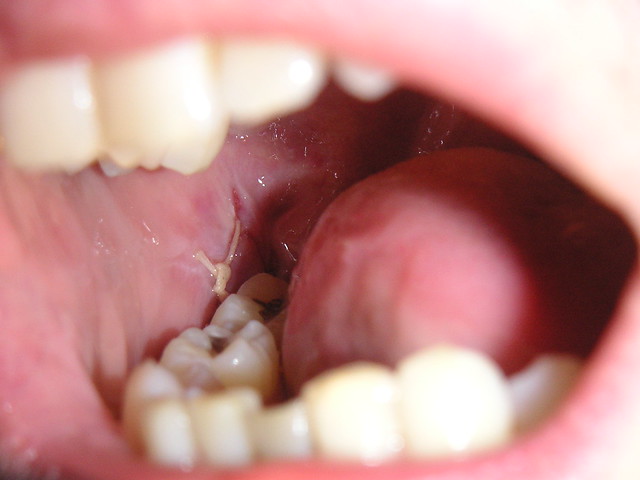An interesting article titled “A re-audit to assess the incidence of alveolar osteitis within the Oral Surgery Department of a teaching hospital” appears in the 2017 edition of Oral Surgery written by Qalandari and Dargue (vol. 10, pp. e22-e29). In the article a discussion is made of determining the chances of experiencing dry socket after wisdom teeth removal in the oral surgery department of a hospital in Britain.
Alveolar osteitis is the official name for what is commonly known as dry socket and is a common complication after wisdom teeth surgery. Dry socket is when there is pain in and around the extraction site after surgery which increases in intensity between one and three days after surgery and there is also a partially or totally disintegrated blood clot within the socket. The authors were interested in what the current incidence was of dry socket occurring in patients having wisdom teeth extracted at the Oral Surgery Department of the Bristol Dental Hospital. A prior study in 2003 showed an incidence of 9.45% of dry socket occurring and a prior study in 2008 showed an incidence of 4% of dry socket occurring after wisdom teeth surgery at the Bristol Dental Hospital. A Cochrane systematic review performed in 2012 showed an incidence rate of between 0.5% and 5% of dry socket occurring after wisdom teeth surgery among a variety of surgery center sites.

In the current study a total of 144 wisdom tooth extractions were performed on 89 patients with 55% of the extractions performed by dental students and 45% of the extractions performed by staff members. All patients in the study had wisdom teeth removed using local anesthesia only. Seven patients were diagnosed with having dry socket between 2 and 5 days after surgery which resulted in an incidence of dry socket of 4.8% (7/144). A total of 71% (5/7) of the cases of dry socket had the wisdom tooth extracted by a dental student instead of a staff member. The authors state
“The 2015 audit shows an acceptable level of AO [alveolar osteitis] incidence of 4.8%… and is below the target of 5%. This shows a slight increase from the 2008 audit and is below the 2003 level that was recorded in the department.”
The authors also noted that the 2003 and 2008 studies at their department suffered from patient notes missing signs and symptoms of dry socket and also missing diagnosis of dry socket in some cases. In the present study all the signs and symptoms of dry socket and such a diagnosis when it occurred was properly reported in all patient notes. From the current study and the prior two studies the authors conclude that the most likely risk factor of experiencing dry socket after wisdom teeth removal is from having the person who performs the extraction having less experience. Thus the authors indicate it is important for the patient having the procedure to be informed when a student is performing the surgery. The authors also note from the current study and the 2008 study that more dry sockets occurred after extracting lower wisdom teeth than with upper wisdom teeth. The authors state:
“[the results show]….the experience of the operator and the location of the extraction site as being contributing factors for the development of AO [alveolar osteitis]”
The authors also note that based on their three study results that increasing age does not appear to contribute to more dry sockets occurring after wisdom teeth surgery. Some limitations of the current study are noted such as a small sample size, a short 1 month time period where data was collected, and possible under reporting of the number of actual dry socket cases.
